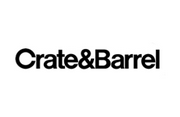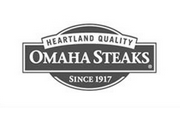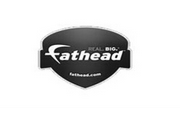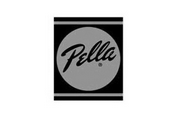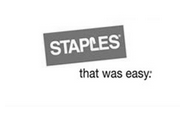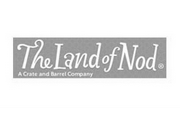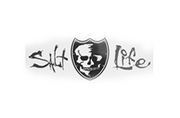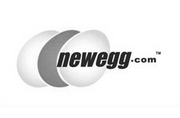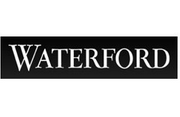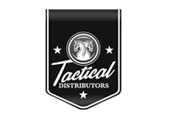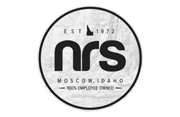Everyone wants to make money with their Google AdWords campaign.
 In a perfect world, the optimal strategy is to spend as much money as you can as long as you’re still profitable with it, and Return on Ad Spend (ROAS) should be important but secondary. Here’s what I mean. Let’s say your breakeven ROAS is 2.0, meaning you neither make nor lose money if you get back $2 for every $1 spent in AdWords. If that’s the case and you spend $1,000 to make $5,000, your ROAS is a pretty outstanding 5.0, and you’ve made $3,000 in profit ($2,000 would break even, but you’ve made $5,000 for a net profit of $3,000). Now if you spent $1,000,000 to make $2,100,000, your ROAS is much weaker at 2.1, but you made $100,000 in profit (with $2,000,000 as the breakeven number). So even though your ROAS was much better with spending $1,000, you made significantly more with a worse ROAS.
In a perfect world, the optimal strategy is to spend as much money as you can as long as you’re still profitable with it, and Return on Ad Spend (ROAS) should be important but secondary. Here’s what I mean. Let’s say your breakeven ROAS is 2.0, meaning you neither make nor lose money if you get back $2 for every $1 spent in AdWords. If that’s the case and you spend $1,000 to make $5,000, your ROAS is a pretty outstanding 5.0, and you’ve made $3,000 in profit ($2,000 would break even, but you’ve made $5,000 for a net profit of $3,000). Now if you spent $1,000,000 to make $2,100,000, your ROAS is much weaker at 2.1, but you made $100,000 in profit (with $2,000,000 as the breakeven number). So even though your ROAS was much better with spending $1,000, you made significantly more with a worse ROAS.
Now that’s an extreme example, but it does go to show that ROAS is not the holy grail.
However, the reality is that sometimes you’re limited by budget, and improving ROAS is all you can do – because your spend is fixed, or there’s a limited market, or you’re not prepared to scale, or for whatever reason. And no matter what your budget is, improving your ROAS should be one of your goals.
Five in-depth and easy ways to increase your ROAS.
- Adjust Bids Based on Devices. You can set different bids for mobile, tablet, and desktop devices. Typically desktop is the default and then you adjust your bid for mobile or tablet off of that. You can adjust the bid as a percentage, as a decrease of up to 90% or an increase of up to 900%. Usually what you want to do is adjust the bid down for mobile. With mobile, shoppers are typically more in the browsing process rather than actually buying. That's not the case with everyone of course, so you'll want to keep your ads on mobile and not eliminate them altogether, but for the most part, a click on mobile is NOT as valuable as a click on desktop. So you'll want to bid it down, let's say 20-50% to start. The reason this will improve your ROAS is that you won't be spending as much on mobile devices when the shoppers are typically not as far along in the buying process. Less spend on what’s not working as well and more spend on what is working will increase your return.
- Adjust Bids Based on Time and Location. Similar to adjusting bids based on devices, you can adjust your bids based on time of day and location of query. So for example, if you know that your ads don’t convert very well on the weekends, those clicks aren’t as valuable, so you’ll want to reduce your bids to eliminate wasted spend. But it could be that people DO buy on the weekends and the clicks are even more valuable, so you’d want to increase your bids. For time of day, usually you’ll want to reduce your bids from around midnight to 7AM. For the most part, people aren’t buying at those times. If shoppers are like me and up at 3AM, it’s because they’re holding a sleeping baby, kinda sorta browsing around, but not at all in the buying mind frame. With location, you’ll need to look at the data to figure out where to adjust bids. Maybe your ads convert best in big cities, maybe they convert best in Midwestern states, maybe they convert best by water…whatever it is, you don’t want to spend nearly as much for shoppers that aren’t going to convert nearly as well.
- Add Negative Keywords. This is probably the easiest way to eliminate unnecessary spend and increase your ROAS. A negative keyword is one that prevents your ad from showing up. So for example, if you’re running a broad match campaign for the keyword “yoga mats”, theoretically your ad could show up when someone is looking for “amazing yoga mats”, “yoga mats walmart”, “cheap yoga mats”, and “do yoga mats smell bad”. Unless you’re the SEM manager at Walmart, you probably only want your ad to show up for one of those queries, so you’ll need to add negative keywords to your list. If you added the negative keywords “cheap”, “smell”, and “walmart”, your ad would only show up for the “amazing yoga mats” query, and you’d be eliminating wasted spend, again improving your ROAS. Some very common negative keywords to add to your list include “cheap”, “used”, “walmart”, “target”, “craigslist”, “reviews”, “ugly”…the list goes on. To give you an idea, when we bring a client on board, we add hundreds of negative keywords right away. And just to be clear on why you want to add in the major brands – shoppers will use Google search instead of the website search even though they already know what store they want to buy from (Walmart, Target, Amazon), so you don’t want to waste spend there when they’re almost certainly going to click on the store they know they want.
- Reduce Reliance on Broad Match. Broad match can be a great way to assess what keywords you’re getting the best return from, but it can also be a way to spend a lot of money without seeing the best return. Let’s go back to the yoga mats example. If you’re running a broad match for “yoga mats” (and let’s assume that you’ve added in the negative keywords we talked about), you’ll figure out what converts best for you and where you’re seeing the highest ROAS. It could be the general term “yoga mats”, or maybe “pink yoga mats”, or maybe “extra foam yoga mats” or “yoga mats for very tall inflexible people” (I might be the only person searching for that). Most likely, “yoga mats” itself won’t provide a great return since shoppers aren’t exactly sure what they want. “pink yoga mats” and “extra foam yoga mats” are much more specific, and theoretically the shoppers are much further along in the buying process. But once you know what converts for you and what doesn’t, you can use that information to reduce your reliance on broad match and move to an exact keyword match strategy to enhance your ROAS.
- Add a Branded Campaign. If you don’t already have a branded campaign, this tip will improve your ROAS the most. Branded search campaigns get usually between 2X and 4X the non-branded ROAS. And it makes sense, the shopper already knows what they want – a product from your website. Now even though this is a great way to improve the ROAS of your AdWords campaign, many marketing managers and business owners believe it’s a complete waste of money to bid on your own name. The argument is that if someone is searching for the business name, they already know what they’re looking for, so why pay extra money for those clicks when they’ll almost certainly click on the free search result if there’s no ad? That makes a lot of sense. Except, there are a couple problems with that theory. First, if you’re not bidding on your own name, your competitors are likely to. It stinks, it’s savage, it’s cutthroat, but unfortunately, that’s how it works. Your competitors are free to bid on your name, and you’re free to bid on your competitors’ names. Second, when you bid in your own name, it gives you a chance to control what shoppers see about you. Ideally, they would see your website, your Facebook page, Twitter page, Pinterest, Linkedin, but unfortunately, that’s not always the case. Sometimes competitors creep into the natural search results as well, but probably even worse than that is when (sometimes negative) reviews show up. You don’t want to take that chance!
So those are 5 easy ways to improve your ROAS, and here’s a bonus tip as well!
(Bonus) Add a Shopping Feed and Set Up the Shopping Campaign. This is a bonus because it’s not exactly easy. But it will certainly improve your ROAS once set up correctly. Shoppers get to see your products and price right away, so they’re further along in the buying process if they click on it. Plus, believe it or not, Shopping ads are still less expensive per click on average versus traditional text ads. And not only that, it’s still an inefficient market because not everyone can set up their feed properly, so they give up. As an e-commerce store, if you can take advantage of Shopping, that allows you to take advantage of others who don’t.
I hope this all helps! With these tips, you’ll be able to show a significantly improved ROAS. Of course, these are the simple ways, and PPC Management is complicated. If you’re looking to maximize your ROAS and profitability of your campaign and need someone to manage it for you, give us a call.
“We’re an incredibly small team, so having Triangle Direct Media (TDM) manage my PPC campaign allows me to focus on other eCommerce and business needs that are more suited to my strengths. They have a proven track record of being solid stewards of my program, funds and returns”– NRS J.M. –
Listen to a short audio excerpt from 'My Digital Story Podcast' describing working with TDM and recent business growth.
Why Triangle Direct Media?
Connecting Brands and Consumers Through Digital Experiences Since 2006
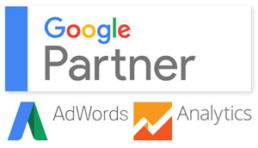
Call us today or schedule your FREE review!
Phone 919.228.2475 or fill the information below and one of our representatives will contact you shortly.

